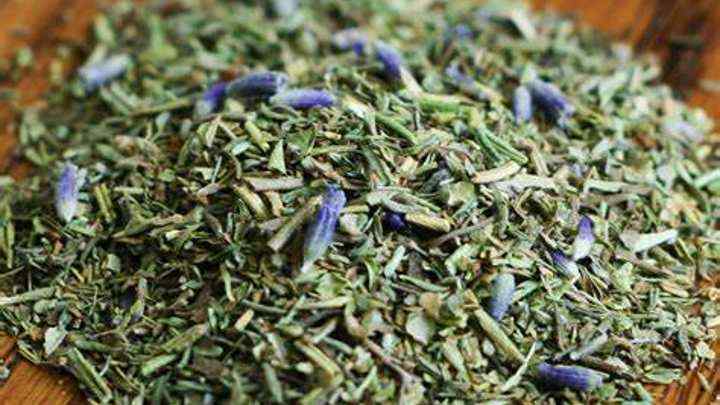What is a savory flavor? Savory is a common ingredient in Italian and French cuisine that tastes a lot like mint and is peppery.
Savory is a popular part of essential oils and a traditional dish in Europe, thanks to its pleasant aromas. Before black pepper was introduced to Europe via the spice trade from Asia, it was a well-liked herb.
It is, however, less often used on its own in North America, which can make finding it on the shelves of the grocery store a little challenging.
To learn more about savory, its alternatives, what it is, and the ways you can use it in your cooking, you should read this article through to the end.
What is savory?
The “herb of love” is another name for savory. Savory is a small, green plant that belongs to the mint family and is used to improve the taste of food.
Winter savory and summer savory are the two primary cultivars of this aromatic herb used in cooking. Both are indigenous to the warm Mediterranean slopes.
The ancient Romans used this fragrant herb to make love potions because they thought it was a natural aphrodisiac.
What is a savory flavor?
A savory flavor is typically described as something that has been cooked, is flavorful, and delicious.
However, if you want to define the savory herb flavor, know that it has a strong peppery flavor. The taste of each type of herb also varies.
While winter savory is earthier and more subdued in its pepper content, summer savory has a hot, peppery flavor. Both have thyme, mint, and marjoram undertones.
SEE: Key Similarities and Differences Between a Peppermint and Mint
Why is it called savory?
According to lore, the Roman Empire brought savory spice to England, where it quickly gained favor for use in both cooking and medicine.
As a result of its close resemblance to spiciness and pungent flavor, the English called it “savory.”
The difference between summer and winter savory
Before the advent of black pepper to Europe via the spice trade from Asia, both winter and summer savory were very popular herbaceous plants. While winter savory has a more muted, earthy flavor, summer savory has a hot, peppery flavor.
Winter savory
- Satureja Montana, or winter savory, is a tough, bright green herb with bitter and aromatic leaves.
- Its name, Montana, which means “mountain,” comes from the fact that it is a hardy plant that typically grows in the bumpy bedrock of the Mediterranean.
- Winter savory loses some of its potency when cooked for an extended period, but your dish will retain a hint of sage and pine flavor.
- It is a hardy herb that goes well in stews, soups, and pairs best with beans, meat, fish, root vegetables, cabbage, and lentils.
- Given that it has inklings of pine and sage and is most evocative of winter, it is most often used in slow-cooked dishes like stews and soups.
- Even though winter savory has a more bitter flavor, you can use it in place of summer savory if your recipe calls for it.
SEE: Get a Chance to Win a $250 Gift Card at Sprouts Market
Summer savory
- Satureja hortensis, also known as summer savory, is an herb with a sweet and spicy aroma and a milder flavor than winter savory. The plant is delicate and has tiny, light-green leaves.
- It is one of the most widely used herbal ingredients in Acadia, a region on Canada’s Atlantic coast, and is used in everyday cooking and special holiday meals.
- Because of its tender leaves, summer savory is typically used as a garnish for salads, in egg dishes, and in the making of sausages.
- It is also one of the ingredients used in the dry spice mixture herbes de Provence, which is typically used in stews, sauces, and grilled meats.
Is savory the same as umami?
Yes, you could say it is. Along with sour, sweet, bitter, and salty, umami is the fifth fundamental taste.
This fifth flavor was discovered by Japanese scientists at the beginning of the 20th century and was given the savory name “umami.”
Umami, which means “pleasant savory taste,” has been compared to a meaty or brothy flavor. Foods like Parmesan cheese, seaweed, miso, and mushrooms high in the amino acid glutamate have an umami flavor.
3 ways to use savory in cooking
We have two different kinds of savory herbs, so it would be helpful to know how to use them in your recipes.
1. A great substitute for salt
The Romans once used savory to replace salt, and it is still the ideal application for the hot herb.
2. Use a winter savory to season meat
The herb winter savory is a great addition to meat because it tolerates lengthy preparation and cooking times.
Salami can even be preserved and given flavor thanks to it. Before roasting or grilling, infuse meats like pork, beef, and chicken with winter savory to bring out those rich, peppery-pine flavors.
SEE: Recommendations Of Thyme Substitute From Cheffist for You
3. Vinegar-filled bottles
To a quart of white wine vinegar, add a cup of summer savory leaves. The liquid’s acidity aids in the savory, spicy oils’ extraction, making a long-lasting, flavorful condiment that can be used to season food like salads, marinades, soups, and grilled vegetables.
The best substitutes for savory
Knowing the alternatives to savory because it is not as prevalent in North American households is a good way to prepare the ingredients for your recipe.
As a result, when you need a substitute for the spice, you can use the following.
Sage

Sage has a strong, earthy, bitter flavor with hints of pine, like winter savory. Citrus undertones in sage also enhance the flavors of many foods.
Lamb, poultry, beans, and potatoes are some of the foods it is most often used to season. Additionally, it is used in bread, pastries, marinades, and sauces. Savory can be replaced with fresh sage at a percentage of 1:1.
Oregano

The flavor of oregano is earthy, slightly bitter, and minty. Due to their similar tastes, oregano and marjoram are frequently confused, but oregano has a slightly better taste.
In stews, pasta sauces, pizza sauces, and other sauces, oregano frequently appears. Additionally, it is used to season beans, chicken, fish, and other meats.
Oregano is an excellent alternative to savory and can be used in a stoichiometric ratio due to its specific flavor profile.
Thyme

Due to the obvious similarities in flavor, thyme is the herb that both types of savory can most easily be substituted.
Thyme has a flavor that is comparable to lavender and rosemary in that it is grassy and woody. It is often used in savory dishes like roasted meat, fish, stews, soups, marinades, vegetables, and even baked goods.
SEE: Find Out How Much Dry Thyme You Can Get in a Sprig
Marjoram

Marjoram is a part of the mint family, just like savory. It tastes like citrus and pine, very similar to oregano. The fact that it is one of the herbal plants used in herbes de Provence is another similarity to savory.
Additionally, it is one of the components found in other spice blends like za’atar, Italian seasoning, and poultry seasoning.
The foods that go best with marjoram are poultry, meat dishes, and vegetables. In addition, it’s a fantastic herb for soups, salad dressings, stews, and sauces.
Savory can also be replaced with Marjoram in a specific proportion.
Rosemary

Pine, citrus, and zesty notes make up the flavor profile of rosemary, which is quite distinctive. Sage, mint, lavender, citrus, and evergreen are the flavors it most closely resembles.
Fresh and dried rosemary leaves should be chopped before using due to their tough texture. Rosemary can be replaced in a 1:1 ratio because it has a savory flavor profile.
You can season meat, potatoes, lentils, beans, soups, and stews with rosemary. However, bread doughs often use it as well.
Basil

Another member of the mint family, basil has a peppery-mint flavor with a fresh and sweet aroma. Basil, whether fresh or dried, is frequently used in sauces, soups, salads, and as a pizza topping.
Fresh basil should not be incorporated until the very end of cooking if used; otherwise, overcooking it will cause it to lose flavor. Likewise, basil can be used in place of savory in a 1:1 ratio.
SEE: Basil Leaves To Dried Basil Conversions and Measurements
Herbes de Provence

Herbes de Provence is a widely used spice blend that includes thyme, marjoram, rosemary, savory, and other herbs.
It is most often added to soups and stews as well as grilled meats and fish to season them.
Despite the variety of flavors, each herb and spice blends to create a singular aromatic mixture that enhances the flavor of a wide range of meals.
Given that savory is one of the condiments, you can replace it with herbes de Provence.
SEE: How to Stand a Chance to Win a $1,000 Gift Card at Big Lots Supermarket
FAQs
Is savory healthy?
It is, indeed. Savory has a long history of being used as a home remedy for a variety of illnesses. The most typical advantages include relief from sciatica, bee stings, intestinal disorders, and dry and sore throats.
Additionally, it lowers bad cholesterol, and because it is high in antioxidants, it may reduce the risk of cancer (not known if that is 100 percent correct).
Potassium, which is essential for regulating heart rate, is a great source of it. The formation of red blood cells depends on iron, which is abundant in summer savory.
It also has significant amounts of vitamin A, which is good for the skin and vision, and vitamin C, which allows your body to develop disease resistance.
What is an example of a savory flavor?
You’ve experienced savory flavors if you’ve ever consumed soy sauce, parmesan cheese, or salami.
Powerhouses of savory flavor include foods that have been fermented, such as soy sauce or miso paste, aged for a long time, like aged cheese and meat or champagne, or slow cooked for a lot longer, like soup or broth.
What ingredients are savory?
Monosodium glutamate (MSG), yeast extracts, and hydrolyzed enzymes (animal and plant) are common savory ingredients.
Conclusion
Because of how well-known savory was, it was prohibited from being grown in European monasteries for dread that the monks would become enchanted.
Today, however, seasoning meat, enhancing beans, and giving food a thyme-like flavor are some of the more popular uses for savory.
It is known to have several health advantages in addition to being used to season food. It is frequently employed as a digestive aid and a treatment for bacterial infections, sore throats, and coughs.
Also, if you suffer from Asthma and respiratory problems you can receive help from savory. As a natural antiseptic, savory is also used to treat bites and stings.
Thanks for reading.
If you enjoyed reading this article, view Cheffist for more.







